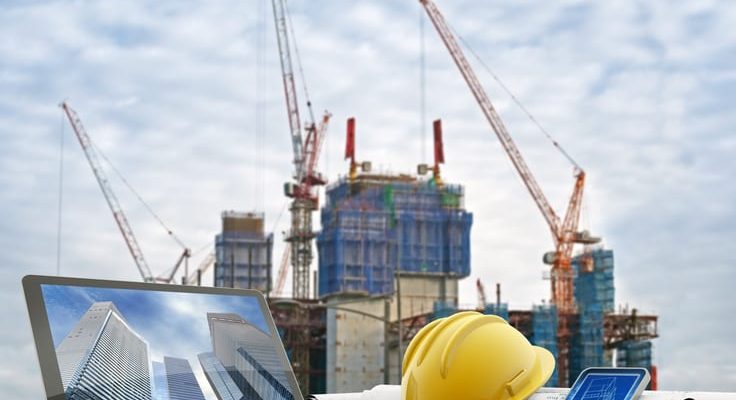The construction sector is a major contributor to any national economy. Though construction is one of the oldest industries in the world, it is experiencing a lot of new challenges lately with fancy patios and other outdoor spaces. The pandemic saw many smaller firms shut up shop, and bigger fishes ate away the smaller ones. Supply concerns and rising building material costs are the two most pressing issues at hand.
Construction supplies shortages
With the economy showing signs of recovery globally, the momentum in the construction industry has picked up pace. Booming real estate markets, strong economic rebound, huge government spending and mass vaccination drives have supported the growth. Though the industry is showing signs of improvement it is still a long way from reaching the pre-pandemic levels. The industry is currently grappling with supply shortages, because of the post-pandemic rebound in demand, which is adversely impacting the cost and lead times, pushing the prices for building materials higher. The Commercial Construction Index (CCI) rose by just one point from 65 in Q2 to 66 in the third quarter of 2021.
A CCI Survey Respondent said, “The cost and availability of materials is our biggest concern. Materials aren’t available, and prices keep increasing while they are out of stock.”
Building material prices
The concern about cost of building materials reached an all-time high in the third quarter to the extent that contractors claimed material cost fluctuations impacting their businesses either to a moderate or high extent. Steel was the most short-supplied construction material, followed by lumber and insulation materials in the last quarter. Lumber continued to make record highs in the quarter. Keeping track of commodity prices becomes of utmost importance in times of fluctuations. These prices also play an important role in forwarding contracts, wherein building construction contractors might have an opportunity to reprice projects and offset their prior costs/ losses. Some of the common commodities associated with construction are copper, iron, aluminum, and steel. Another factor driving up commodity prices besides construction demand is trading activity in financial markets, which can affect how much is paid by construction firms and end users. Given the supply chain constraints, builders are also looking for alternative materials to aid construction. However, this can add to additional costs.
Future Prospects of the Construction Industry in a post-pandemic world
During the course of the pandemic, construction activities remained stalled in many parts of the world especially due to lack of labor, challenges around liquidity and free cash flow as well as supply chain issues. However, the prospects of the global construction industry now look bright with global construction output estimated to grow by 42%, or $4.5 trillion, between 2020 and 2030. Asia-Pacific region is expected to drive growth over the next decade.
With the pandemic now behind, the construction industry is trying to adjust to the new normal and is looking at setting new trends for the future and who knows, one might end up finding gemstones in the backyard. The focus has shifted on the labor and technology front as well as modular construction and vertical integration. The industry is expecting to add diversity by employing more women force, adding its own pool of resources through programs like back to work initiatives, bring through trainees, etc. Since the process of construction is evolving digitally, the industry is also looking at employing people with more digital, data and logistics expertise and relying on digital solutions like building-information modeling. The new-age construction industry will be more mindful about concerns around green construction, sustainability and decarbonization requirements. With many industries and companies, now becoming more flexible about working from home, more office buildings will be repurposed to residencies, data centers, or have mixed usage. Rising ecommerce will force the shrinkage of retail outlets while demand for warehousing might increase. So, the design of construction will also change to adapt accordingly. Moreover, the competitive landscape will change too with industry mergers and consolidations.
The companies which can adapt to these trends quickly and with agility will succeed better in surviving and also become stronger. Though the pandemic posed troubled times for the construction industry at large, it has also emerged as a blessing disguise as it has created opportunities for the industry to become better, smarter, more efficient and future ready.
Conclusion
Demand for construction materials has been strong as the economic recovery progresses. But currently the construction industry is mired with a myriad of challenges including project delays, shortage of skilled labor, trade concerns and supply chain concerns. Moreover, emission impact from the construction of new buildings is another major concern for the environment in a climatically challenged world. Hence, governments and regulatory bodies are incentivizing refurbishment of existing buildings over building new ones. Though demand for building materials remains strong, on the back of robust home construction and refurbishment activities, the scenario in the construction industry will take longer than expected to normalize.













[…] loans, including individual homeowners, small business owners, and contractors who want to start a construction business. In this case, the equity in your land will be used as a down payment for the construction […]
[…] loans, including individual homeowners, small business owners, and contractors who want to start a construction business. In this case, the equity in your land will be used as a down payment for the construction […]